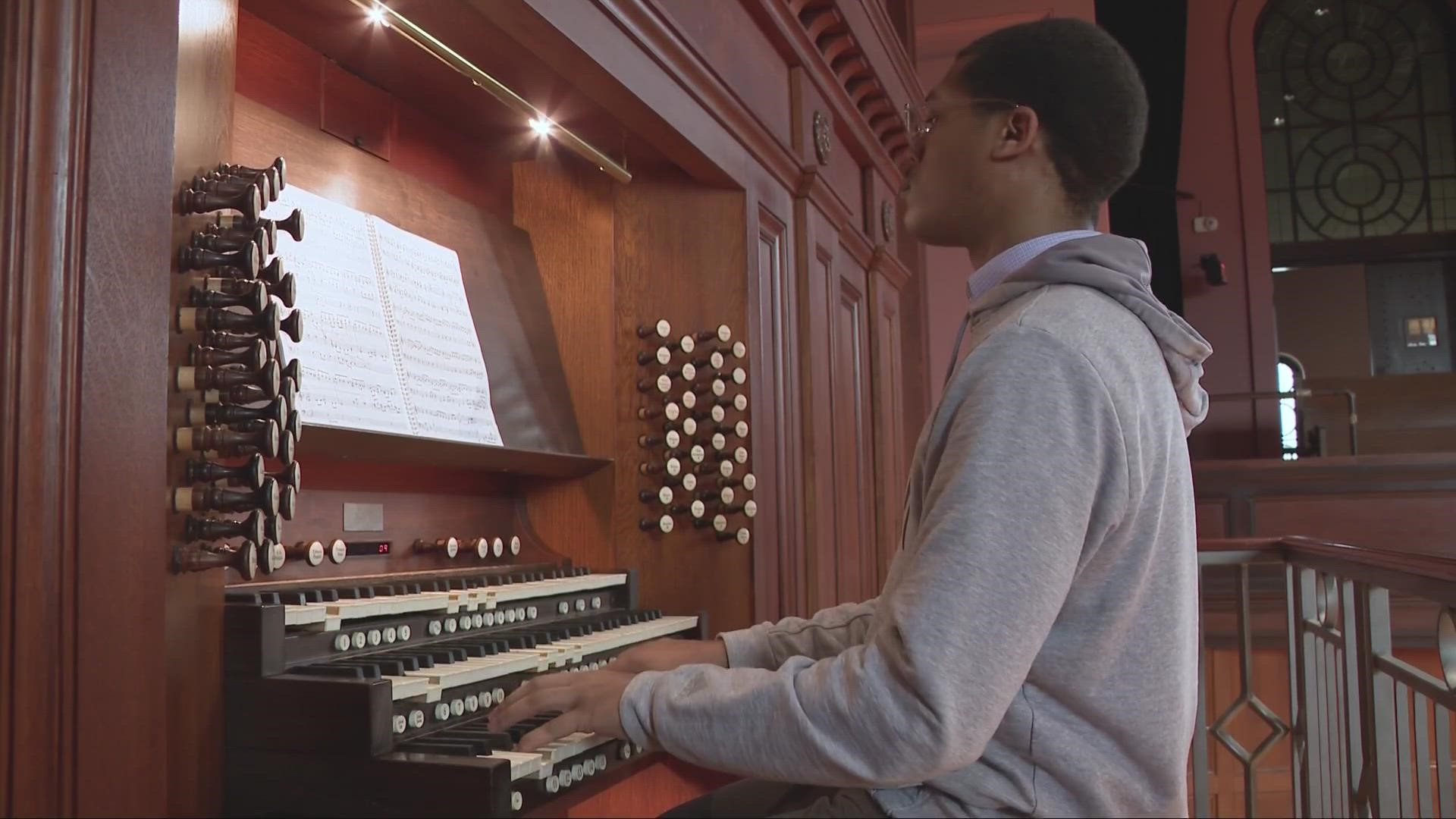OBERLIN, Ohio — Lorain County’s Oberlin College and Conservatory is filled with a deep history and an incredibly rich legacy of trailblazing Black musicians and Black musical arts. It’s a legacy that traces back to the college’s earliest days as a progressive institution.
Oberlin College was founded in 1833 and the music conservatory followed in 1865. Oberlin adopted groundbreaking policies to admit students of color in 1835 and granted undergraduate degrees to women in a co-educational program before any other college in America.
For Black musicians who wanted to study music – this was a game-changer in their educational journey and beyond.
One student directly impacted by the incredible Oberlin Music Conservatory is current sophomore Daesean Lawson. He is a Cleveland native who now studies the organ – one of the most powerful instruments in the world.
“I feel power when I play,” said Lawson. “I feel I am exuding the breath of God when I am playing the instrument of such grander and versality.”
Lawson says his admission to Oberlin was a high note on his musical journey.
“Oberlin has such a rich background with Black musicians with its foundation of the music school,” said Lawson. “Black musicians had been granted access to a high-class education at a time when Blacks were not allowed to perform or even attend the Ivy League so to say or any of the other white institutions during that time. There is this common pattern that we see with these outstanding Black musicians start in Oberlin.”
Alumni like Robert Nathaniel Dett — the first Black double-major graduate of Oberlin Conservatory and the first Black composer to incorporate the Negro Spiritual in grand musical forms for choir and orchestra in the concert hall. Lawson told 3News that Dett is a deep inspiration to him and his studies at the conservatory.
And Lawson is not alone. Assistant Professor of African American and African Diasporic Musics Courtney-Savali Andrews says, “There is no way you can talk about American music from the 19th century to the present without acknowledging the seismic impact of Black alumni and Black faculty from the Oberlin Conservatory of Music.”
Professor Andrews is also a graduate from the conservatory. She returned nearly 15 years later to teach Africana studies and music, educating students today about the struggles Black music students faced.
“In the early 20th century, Blacks are admitted here, they would be celebrated on campus and encouraged to go overseas to study,” said Professor Andrews.
And while they had successful early careers, upon their return they weren’t well received, she says.
“This is why they would final their footing in going to historically Black colleges and university specifically for the next generation coming behind them.”
Those musicians include Harriet Gibbs Marshall, who was the first graduate of Oberlin Conservatory of Music. She founded the Washington Conservatory of Music in DC, a premier music school only for African American students.
Or Lulu Vere Childers, who was the second graduate of Oberlin’s music school. She would later start the celebrated music program at Howard University, an HBCU, or historically Black college and university.
Then there’s William Grant Still, a graduate who is now known as "The Dean of African American Composers" for his incorporation of jazz, blues and Negro Spiritual elements in his European classical music symphonies, operas, and ballets.
Those early graduates were the start of a legacy that would influence future generations of musicians and educators, including Dr. Wendell Logan – a professor and prolific composer, and the founding father of Oberlin’s jazz department in 1989.
Today, so many talented young musicians are following in the footsteps of even more inspiring graduates like Michael Morgan – the longtime musical director of the Oakland symphony, Sullivan Fortner, a Grammy-winning jazz pianist, and George Walker, a Pulitzer Prize-winning composer and his sister, Frances Walker Slocum, who was Oberlin's first black female Conservatory professor.
“Black history is all year long and we do a lot of work to make sure that our students know that this these are living traditions and as we go around the campus, we can see that there are very specific installation and plaques that speak to how we even in our culture and traditions acknowledge ancestry.”
In the historic Finney Chapel, Lawson is doing just that. He is creating the most beautiful music with his hands and feet – and with each note remembering those who paved the way – who also told stories through the notes they played.
“Music is the air I breathe, the blood that goes through my brain. There isn’t a minute that my mind doesn’t go over the notes on the keyboard,” said Lawson. “I don’t think I’d be alive if it wasn’t for music.”

